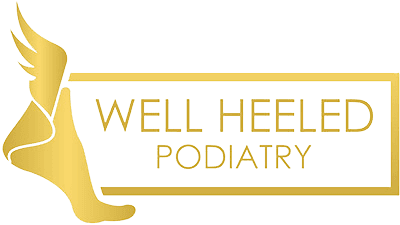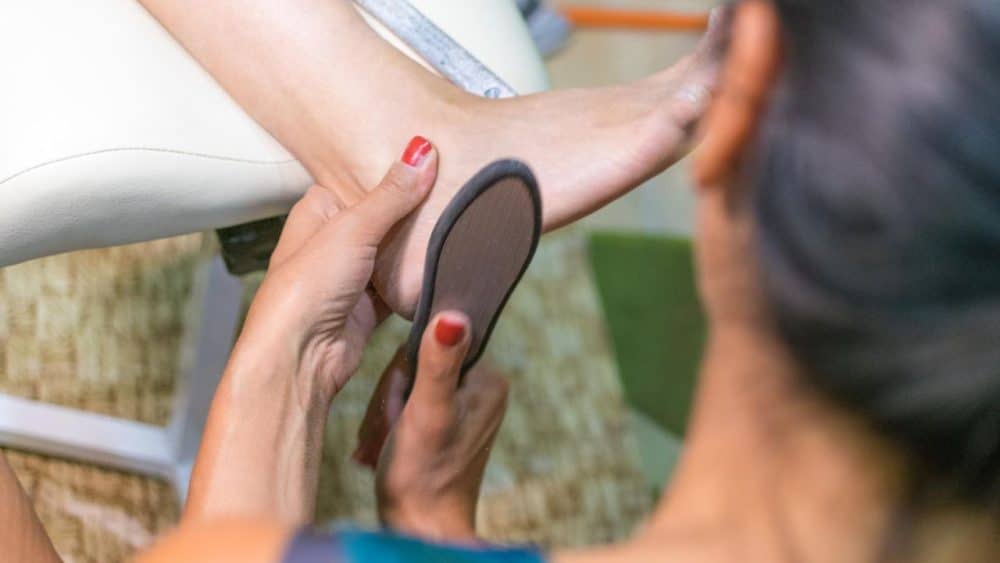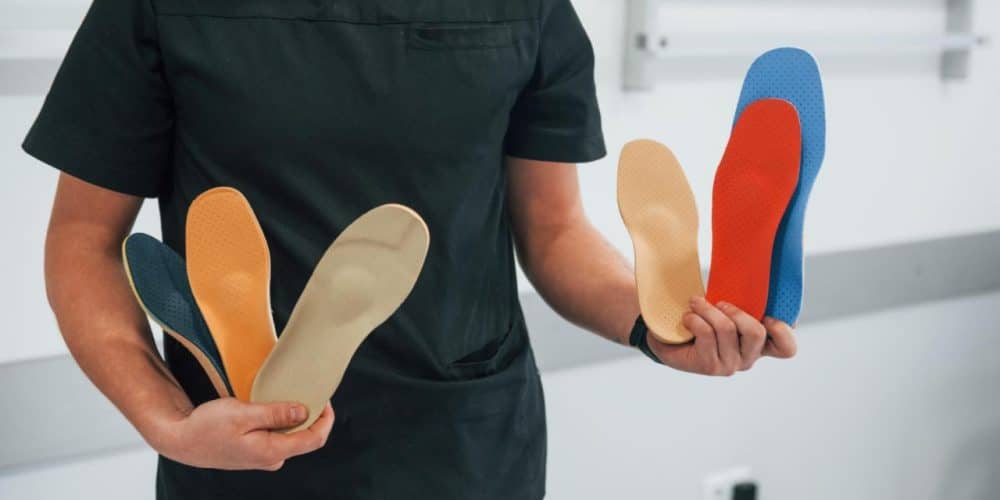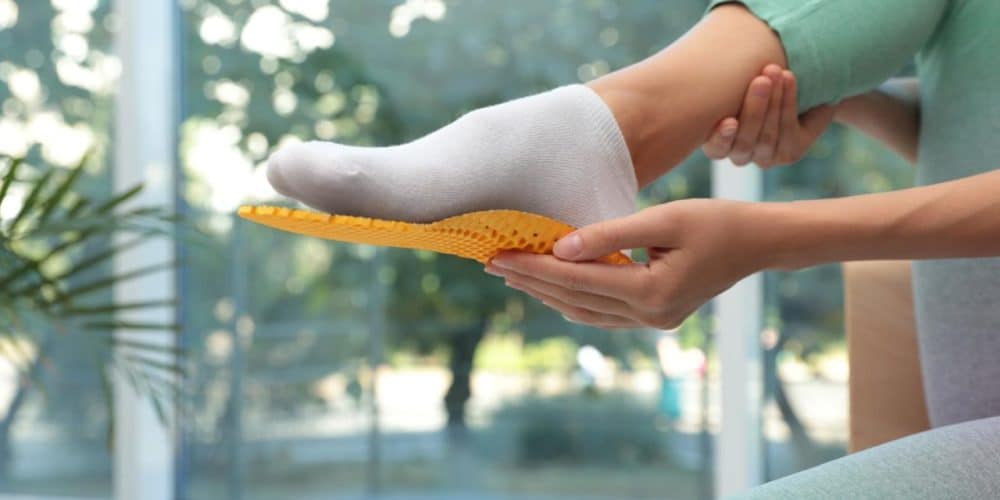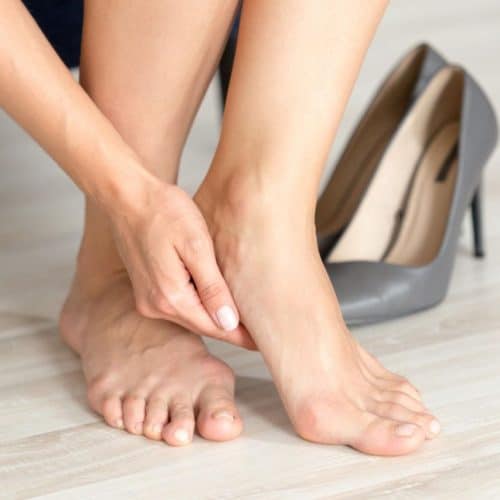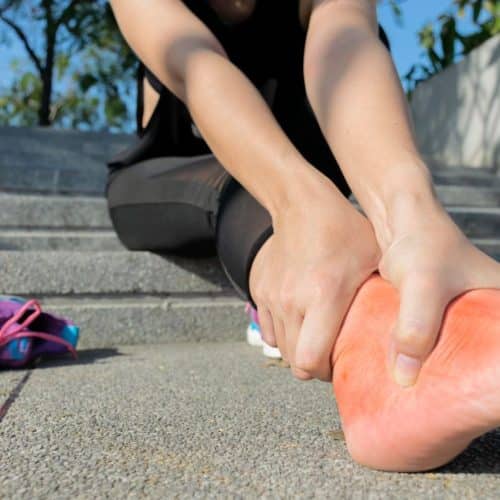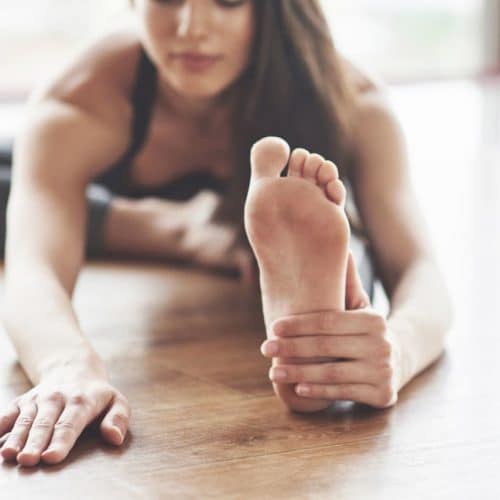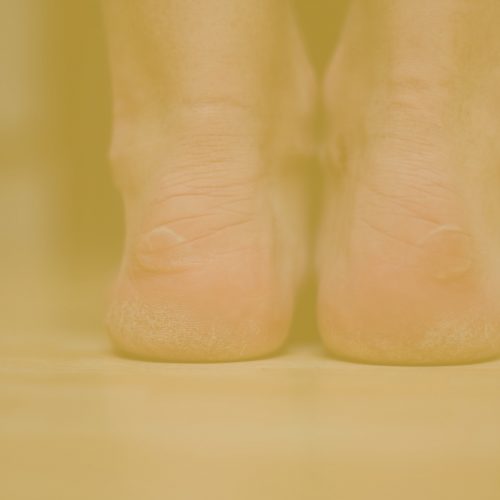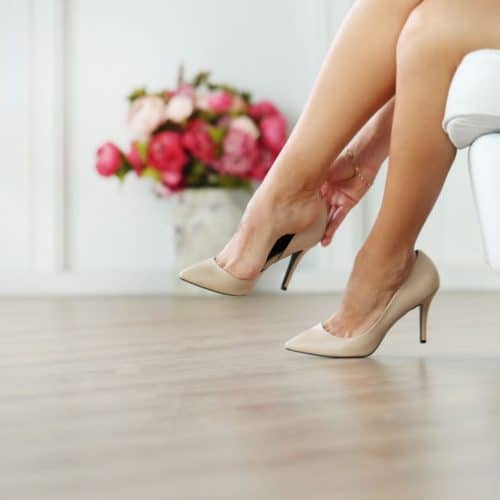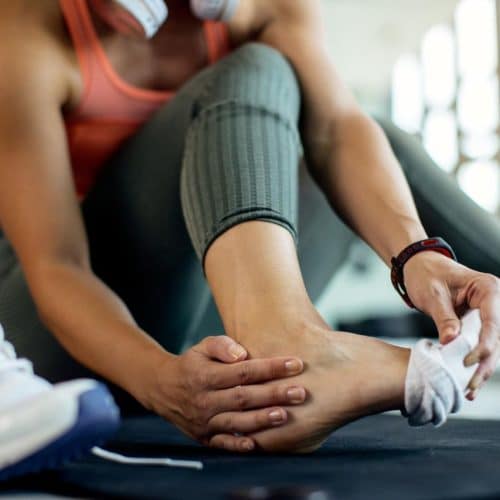Are you tired of dealing with persistent pain that won’t go away? Have you tried various remedies but still haven’t found the relief you seek? If that’s the case, consider orthotics. But what exactly are orthotics, and how can they work wonders in alleviating your pain?
Introduction to Orthotics
Orthotics, or orthoses, are medical devices that aid in correcting or supporting musculoskeletal issues. Depending on the severity of the condition, they can be custom-made to suit an individual’s unique needs or bought off the shelf. These devices primarily address biomechanical problems and alleviate pain caused by various conditions.
Types of Orthotics
Several types of orthotics are available, each designed to target specific body areas and provide relief. Let’s explore each type in more detail:
1. Insoles
Insoles, also known as shoe inserts or footbeds, are one of the most widely used and versatile types of orthotics. They fit inside the shoes and can benefit individuals with various foot-related issues. Insoles come in different designs and materials to address specific concerns.
- Arch Support Insoles: These insoles are designed to support the foot’s natural arch. They are particularly helpful for individuals with flat feet or fallen arches, as they help distribute weight evenly and reduce strain on the feet.
- Cushioned Insoles: They provide extra padding and shock absorption, making them ideal for individuals with foot fatigue or general foot discomfort.
- Heel Cup Insoles: Heel cups cushion and support the heel. They can be effective for conditions such as plantar fasciitis and heel spurs, providing relief and promoting proper alignment.
2. Arch Supports
As the name suggests, arch supports are orthotic devices that focus on maintaining the foot’s natural arch. They come in various forms, including full-length inserts and targeted supports.
- Full-Length Arch Supports: These arch supports extend along the entire foot length, providing comprehensive support and stability. They are suitable for individuals with flat feet or fallen arches.
- Arch Bands and Sleeves: These specialised bands or sleeves wrap around the foot’s arch, offering targeted support for those with mild arch issues.
3. Ankle Braces
Ankle braces are orthotic devices designed to provide additional support and stability to the ankle joint. They can benefit athletes or individuals recovering from ankle injuries and those prone to ankle sprains.
- Rigid Ankle Braces: These are made from stiff materials and provide maximum support and protection for severe ankle injuries or post-surgery recovery.
- Flexible Ankle Braces: These are made from more pliable materials, offering support without restricting natural ankle movement. They are suitable for minor sprains or as preventive measures during physical activities.
4. Knee Braces
Knee braces are orthotic devices that provide support and stabilise the knee joint. They come in various types to cater to different knee conditions.
- Prophylactic Knee Braces: These braces are preventive and are commonly used by athletes to reduce the risk of knee injuries during high-impact sports.
- Functional Knee Braces: Functional braces support individuals with knee injuries or instability. They can help improve knee alignment and protect damaged ligaments.
- Unloader Knee Braces: Unloader braces are designed for individuals with knee osteoarthritis. They work by shifting the weight away from the affected part of the knee, reducing pain and promoting better mobility.
5. Back Braces
Back braces, or lumbar braces, are orthotic devices that alleviate lower back pain and support the spine. They can be particularly helpful for individuals with poor posture, back injuries, or conditions like sciatica.
- Rigid Back Braces: These are constructed from rigid materials and offer maximum support for severe back conditions or post-surgery recovery.
- Flexible Back Braces: Flexible braces provide support while allowing for some movement. They suit individuals with mild to moderate back pain or needing support during physical activities.
6. Wrist Supports
Wrist supports, or wrist braces, are orthotic devices that stabilise and relieve pressure on the wrist. They can be helpful for individuals with conditions such as carpal tunnel syndrome or wrist sprains.
- Carpal Tunnel Wrist Braces: These braces are specifically designed to alleviate symptoms of carpal tunnel syndrome by keeping the wrist in a neutral position and reducing pressure on the median nerve.
7. Elbow Supports
Elbow supports, also known as elbow braces, can help with conditions such as tennis elbow or golfer’s elbow. They work by reducing strain on the affected tendons and promoting healing.
- Tennis Elbow Braces: These braces have a strap that applies pressure to the forearm muscles, relieving tension on the tendons that connect to the elbow.
- Golfer’s Elbow Braces: Similar to tennis elbow braces, golfer’s elbow braces provide targeted compression to ease pain and promote healing.
8. Neck Collars
Neck or cervical collars provide support and restrict movement for individuals with neck injuries or conditions like whiplash. They help stabilise the neck and promote proper alignment.
- Soft Neck Collars: Soft collars are made from foam or soft materials, offering gentle support for minor neck injuries or discomfort.
- Rigid Neck Collars: Rigid collars are made from stiff materials and provide more substantial support for severe neck injuries or after neck surgery.
Conditions that Orthotics Can Help With
Orthotics can be instrumental in providing relief and support for various musculoskeletal conditions. Here are some common conditions that orthotics can help address:
1. Plantar Fasciitis
Plantar fasciitis is a painful condition caused by inflammation of the plantar fascia, a thick band of tissue that connects the heel bone to the toes. It often leads to intense heel pain, especially in the morning or after prolonged rest periods. Orthotics with proper arch support and cushioning can help alleviate the pain associated with plantar fasciitis by reducing pressure on the inflamed tissue and promoting proper foot alignment.
2. Flat Feet
Flat feet, also known as fallen arches, occur when the arches of the feet collapse, causing the entire sole to make contact with the ground. This condition can lead to overpronation, where the feet roll excessively inward during walking or running, resulting in strain on the feet and legs. Orthotics with arch support benefit individuals with flat feet, as they help restore the natural arch and distribute weight more evenly, reducing discomfort and preventing overpronation.
3. Shin Splints
Shin splints are characterised by pain along the shinbone (tibia) and are commonly experienced by athletes, runners, and individuals who engage in high-impact activities. They are often caused by overuse or repetitive stress on the lower leg muscles. Orthotics with shock-absorbing properties can help reduce the impact on the shins during physical activities, alleviating the pain and supporting the healing process.
4. Bunions
Bunions are bony protrusions that form at the base of the big toe, leading to pain, swelling, and discomfort. They can result from genetic predisposition, improper footwear, or structural issues in the foot. Orthotics with wide toe boxes can accommodate the bunion and prevent further irritation, easing discomfort and improving mobility.
5. Achilles Tendonitis
Achilles tendonitis is the inflammation of the Achilles tendon, which connects the calf muscles to the heel bone. It often occurs due to overuse or sudden changes in physical activity. Orthotics with heel cups provide cushioning and support to the heel, reducing strain on the Achilles tendon and promoting healing.
6. Knee Osteoarthritis
Knee osteoarthritis is a degenerative joint disease that causes pain, swelling, and stiffness in the knee joint. Orthotics, particularly unloader knee braces, can benefit individuals with knee osteoarthritis. These braces work by shifting the weight away from the affected part of the knee, reducing pain and improving knee function.
7. Scoliosis
Scoliosis is a sideways curvature of the spine, often diagnosed during adolescence. While orthotics cannot cure scoliosis, they can provide support and pain relief for individuals with the condition. Custom-made back braces can help stabilise the spine and prevent the curvature from worsening.
8. Carpal Tunnel Syndrome
The hands and wrists can be affected by a disease known as carpal tunnel syndrome, which can lead to numbness, tingling, and weakness.
Compression of the median nerve as it travels through the carpal tunnel in the wrist is the root cause of this condition, which manifests as wrist pain. Supports for the wrist, sometimes known as splints, can assist in maintaining the wrist in its natural posture, hence minimising discomfort and alleviating pressure on the median nerve.
9. Heel Spurs
Bony growths that form on the underside of the heel bone are referred to as heel spurs. They are frequently seen in conjunction with disorders such as plantar fasciitis. By relieving some of the pressure that is being placed on the painful area, orthotics that provide enough support for the arch and heel cushioning can help decrease the discomfort associated with heel spurs.
10. Metatarsalgia
Metatarsalgia is a condition characterised by pain and inflammation in the ball of the foot. It is commonly caused by excessive pressure on the metatarsal bones due to running or wearing ill-fitting footwear. Orthotics with metatarsal pads or cushions can help redistribute weight and relieve pressure on the ball of the foot, reducing discomfort.
11. Morton’s Neuroma
Morton’s neuroma is a foot ailment that causes excruciating pain and damages the nerves that are located in between the metatarsal bones. It frequently results in the sensation of standing on a rock or other sharp item. Orthotics equipped with metatarsal pads can help reduce the symptoms of Morton’s neuroma by reducing the pressure placed on the afflicted nerves.
12. Overlapping Toes
Overlapping toes occur when one toe overlaps or underlaps adjacent toes. This condition can cause friction and pressure between the toes, leading to discomfort and potential skin issues. Orthotics with toe separators or spacers can help realign the toes, reducing friction and promoting more comfortable positioning.
13. Patellofemoral Pain Syndrome
Patellofemoral pain syndrome, or runner’s knee, is characterised by pain around or behind the kneecap. It often results from activities that involve repetitive bending of the knee, such as running or cycling. Orthotics with knee support and proper alignment can help reduce the pressure on the patellofemoral joint, easing pain and improving knee function.
14. Iliotibial Band Syndrome
Iliotibial band syndrome (ITBS) is a common injury among runners and cyclists, causing pain on the outer side of the knee. It occurs when the iliotibial band, a thick band of connective tissue, becomes inflamed and rubs against the knee joint. Orthotics with lateral support can help stabilise the knee and reduce friction on the IT band, relieving ITBS symptoms.
15. Lower Back Pain
Lower back pain is a prevalent condition resulting from various factors, including poor posture, muscle strain, or structural issues. Back braces and lumbar supports can help stabilise the spine, improve posture, and alleviate lower back pain.
How Orthotics Work
Orthotics work by providing support, cushioning, and realignment to the affected area of the body. These specially designed medical devices are customised to address individual needs and conditions. Here’s a closer look at how orthotics function:
1. Support and Stability
One of the primary functions of orthotics is to provide support and stability to the body’s musculoskeletal system. By distributing body weight more evenly, orthotics help reduce excessive pressure on specific areas, such as the feet, ankles, knees, or back. This support is particularly beneficial for individuals with flat feet, fallen arches, or misalignments, as it helps restore proper biomechanics and prevents overpronation or supination.
2. Cushioning and Shock Absorption
Orthotics often incorporate cushioning materials like foam or gel to provide shock absorption. When we walk, run, or engage in physical activities, our feet and joints experience impact forces. Orthotics with cushioning properties help reduce the impact on these areas, which is especially useful for conditions like plantar fasciitis, shin splints, and knee pain. The cushioning effect helps absorb forces that would otherwise be transmitted through the body, reducing strain and discomfort.
3. Realignment and Correction
In some cases, orthotics are used to correct biomechanical issues. For instance, an orthotic insert with arch support can help lift the arches of flat feet, promoting proper foot alignment and reducing stress on the arch and surrounding structures. Similarly, orthotics can correct overpronation or underpronation of the feet, aligning them in a more neutral position during movement.
4. Reducing Strain and Pressure
Orthotics are designed to alleviate strain and pressure on specific body areas affected by conditions such as bunions, heel spurs, or Achilles tendonitis. By redistributing forces and providing additional support, orthotics help reduce friction and irritation in these areas, allowing for more comfortable movement and minimising the risk of further injury or worsening of the condition.
5. Improving Body Mechanics
Orthotics play a significant role in improving overall body mechanics. Addressing biomechanical issues and supporting proper alignment help optimise how the body moves and functions. This, in turn, can enhance performance during physical activities and reduce the risk of sports-related injuries.
6. Providing Comfort and Pain Relief
One of the primary reasons individuals use orthotics is to find relief from chronic pain or discomfort. Whether it’s foot, knee, or lower back pain, orthotics can offer significant relief by stabilising the affected area and reducing pressure on sensitive structures. The cushioning effect of some orthotics also adds to the overall comfort, making everyday activities more manageable.
7. Supporting the Healing Process
Orthotics can be instrumental in supporting the healing process for certain injuries or conditions. For instance, an ankle brace can help stabilise the joint after an ankle sprain, allowing the ligaments to heal properly. Similarly, orthotics can provide support during the recovery from foot-related issues like plantar fasciitis, helping to alleviate pain and discomfort as the affected tissues heal.
8. Enhancing Mobility and Functionality
Orthotics can enhance mobility and functionality by addressing musculoskeletal issues and providing the necessary support. Individuals who previously experienced pain or limitations in their movements can find greater freedom and confidence with the assistance of orthotics.
Benefits of Using Orthotics
Using orthotics offers many benefits, making them a valuable solution for individuals with various musculoskeletal conditions. Here are some of the key advantages:
- Pain Relief: Orthotics can significantly reduce pain and discomfort caused by plantar fasciitis, flat feet, knee osteoarthritis, and lower back pain.
- Improved Mobility: By providing support and stability, orthotics enhance mobility and make everyday activities more manageable, especially for individuals with gait abnormalities or balance issues.
- Injury Prevention: Orthotics can help prevent injuries or worsening existing conditions by promoting proper alignment, reducing strain on muscles and joints, and enhancing biomechanics.
- Enhanced Performance: Athletes often use orthotics to optimise their performance and reduce the risk of sports-related injuries, as they help maintain proper foot and body alignment during physical activities.
- Support During Recovery: Orthotics can offer crucial support and protection for individuals recovering from injuries or surgeries, aiding in the healing process and preventing further damage.
- Postural Correction: Orthotics can help correct poor posture and alignment issues, reducing the risk of discomfort and long-term complications related to musculoskeletal imbalances.
- Customisation for Individual Needs: Custom-made orthotics are tailored to address an individual’s condition, ensuring the most effective support and relief.
- Comfort and Cushioning: Many orthotics incorporate cushioning materials, providing additional comfort and shock absorption during walking or running.
- Non-Invasive Solution: Orthotics offers a non-invasive approach to managing musculoskeletal issues, making them a preferred option before considering more invasive treatments.
- Improvement in Daily Activities: By reducing pain and discomfort, orthotics can significantly improve an individual’s ability to perform daily activities with greater ease and confidence.
- Long-Term Benefits: Using orthotics as part of a comprehensive treatment plan can lead to long-term benefits, such as improved joint health, reduced wear and tear, and enhanced overall musculoskeletal function.
- Prevention of Complications: Addressing musculoskeletal issues with orthotics can prevent secondary complications from untreated conditions.
Orthotics offer many benefits that can positively impact an individual’s quality of life. Whether relieving pain, improving mobility, preventing injuries, or supporting the healing process, orthotics provide valuable assistance in addressing musculoskeletal conditions and promoting overall well-being.
Consult with a podiatrist to determine the most appropriate type of orthotics for your specific needs and experience the many advantages they can offer in enhancing your comfort and mobility.
Consultation and Customisation
When considering orthotics to address your specific musculoskeletal condition, it is essential, to begin with a consultation with a qualified podiatrist. This consultation allows the expert to assess your condition, understand your symptoms, and recommend the most suitable orthotic device. Here’s what you can expect during the consultation and customisation process:
1. Evaluation of Your Condition
During the initial consultation, the podiatrist will thoroughly evaluate your condition. They will ask about your medical history, including past injuries or related issues. They will also inquire about your lifestyle, daily activities, and the specific symptoms you are experiencing.
Next, the podiatrist will perform a physical examination to assess your body’s biomechanics. They may observe your gait, foot structure, and joint mobility to identify misalignments or abnormalities contributing to your pain or discomfort.
2. Gait Analysis
A crucial part of the evaluation process is gait analysis. This involves observing how you walk or run to understand how your feet and lower limbs move during each step. Gait analysis can reveal issues such as overpronation or supination, which may require correction through orthotics.
3. Customisation of Orthotics
Based on the evaluation and gait analysis, the podiatrist will proceed with the customisation process if custom orthotics are deemed necessary. Custom orthotics are individually tailored to your unique foot structure and specific condition, ensuring the best fit and support.
Typically, the customisation process involves precise measurements of your feet using advanced technology or traditional casting methods. The podiatrist will create a mould or digital scan of your feet to capture their shape and contours accurately.
Using the mould or digital scan as a reference, the orthotics will be custom-made to address your specific needs. The podiatrist will choose the appropriate materials and features that align with your condition and provide the desired level of support and cushioning.
4. Follow-Up Fitting and Adjustments
Once your custom orthotics are ready, you will return for a follow-up fitting. During this appointment, the podiatrist will ensure that the orthotics fit correctly inside your shoes and provide the intended support. They will also check how your feet respond to the orthotics during walking or other activities to make any necessary adjustments.
Communicating openly with the podiatrist during the fitting process is essential. If you experience discomfort or notice pressure areas, they can adjust to fine-tune the orthotics for maximum comfort and effectiveness.
5. Regular Follow-Ups
Following the initial fitting, the podiatrist may recommend regular follow-up appointments to monitor your progress and ensure that the orthotics continue to meet your needs. Depending on your condition, periodic evaluations may be necessary to assess any changes or improvements in your musculoskeletal health.
6. Off-the-Shelf Orthotics
Over-the-counter or off-the-shelf orthotics may be sufficient to address your condition. These are pre-made orthotic devices that come in various sizes and designs. While they may not provide the same level of customisation as custom orthotics, they can still offer support and relief for certain conditions.
When considering off-the-shelf orthotics, it’s essential to consult with a podiatrist to ensure that you choose the most appropriate type for your specific needs.
Tips for Choosing the Right Orthotics
When selecting orthotics, keep the following tips in mind:
- Consult a Professional: Seek advice from a healthcare practitioner specialising in orthotics to determine the most appropriate solution for your condition.
- Consider the Material: Orthotics come in various materials, such as foam, gel, plastic, and leather. Each material has its benefits and may be more suitable for specific conditions. For example, foam and gel provide excellent cushioning, while plastic offers more rigid support.
- Size and Fit: Proper fit is crucial for the effectiveness of orthotics. Ensure the device fits comfortably inside your shoes and supports the areas that need it most.
- Activity Level: Consider your activity level when choosing orthotics. You may require more durable and supportive orthotic devices if you are an athlete or engage in high-impact activities.
- Replace Regularly: Orthotics, especially those used frequently, will eventually wear out and lose effectiveness. It’s essential to replace them as your podiatrist recommends to maintain their benefits.
Proper Maintenance of Orthotics
To prolong the lifespan and functionality of your orthotics, follow these maintenance tips:
- Keep Them Clean: Regularly clean your orthotics with mild soap and water to prevent dirt and bacteria buildup.
- Air Dry: Allow your orthotics to air dry completely before using them again. Avoid exposing them to direct heat, as it may damage the materials.
- Store Properly: Store your orthotics in a cool, dry place to maintain their shape and integrity when not in use.
- Inspect for Wear: Periodically check your orthotics for signs of wear or damage. If you notice any issues, consult your podiatrist for a replacement.
Alternatives to Orthotics
While orthotics can benefit many individuals, some may seek alternative approaches to pain relief and improved mobility. Some alternatives include:
- Physical Therapy: Targeted exercises and physical therapy can help improve strength, flexibility, and alignment, reducing the need for orthotics.
- Footwear Modifications: Choosing supportive and properly fitting footwear can alleviate some conditions without additional orthotics.
- Pain Management Techniques: Non-invasive pain management techniques, such as acupuncture or massage therapy, may relieve certain conditions.
- Lifestyle Changes: Making lifestyle changes, such as maintaining a healthy weight and adopting proper posture habits, can positively impact musculoskeletal health.
Conclusion
Orthotics are valuable medical devices that relieve and support various musculoskeletal conditions. Whether you suffer from foot, leg, or back pain, orthotics can significantly improve your quality of life by providing stability, comfort, and pain relief. However, it is crucial to consult with a podiatrist to determine the most appropriate type of orthotics for your needs.
Have you ever tried orthotics before, and if so, what kind of benefits did you experience? If not, are you considering giving them a try to alleviate your foot pain and enhance your daily activities? Share your thoughts and experiences in the comments below; we’d love to hear from you!
Now, you can take the first step towards a pain-free life by exploring the world of orthotics. Consult with a specialist, find the right orthotic device for your condition, and embrace the improved mobility and comfort they can bring daily.
Proper foot care is essential for overall well-being, and orthotics might be the key to unlocking a more comfortable and active lifestyle. So don’t hesitate – take that step towards a pain-free future today!
Content Summary
- In a nutshell, orthotics are specialised devices designed to support and correct the alignment of your feet.
- Whether you suffer from foot, ankle, or even lower back pain, orthotics can be tailored to address your unique needs.
- At the heart of it, orthotics can be a game-changer for those seeking relief from discomfort and injuries.
- With the ability to address various foot conditions such as plantar fasciitis, bunions, and even arthritis, orthotics offer a path to enhanced mobility and improved quality of life.
- Several types of orthotics are available, each designed to target specific areas of the body and provide relief.
- As the name suggests, arch supports are orthotic devices that focus on maintaining the foot’s natural arch.
- Ankle braces are orthotic devices designed to provide additional support and stability to the ankle joint.
- Knee braces are orthotic devices that provide support and stabilise the knee joint.
- Wrist supports, or wrist braces, are orthotic devices that stabilise and relieve pressure on the wrist.
- They can be helpful for individuals with conditions such as carpal tunnel syndrome or wrist sprains.
- Elbow supports, also known as elbow braces, can help with conditions such as tennis elbow or golfer’s elbow.
- Similar to tennis elbow braces, golfer’s elbow braces provide targeted compression to ease pain and promote healing.
- Orthotics can be instrumental in providing relief and support for various musculoskeletal conditions.
- Orthotics with proper arch support and cushioning can help alleviate the pain associated with plantar fasciitis by reducing pressure on the inflamed tissue and promoting proper foot alignment.
- Orthotics with shock-absorbing properties can help reduce the impact on the shins during physical activities, alleviating the pain and supporting the healing process.
- Orthotics, particularly unloader knee braces, can benefit individuals with knee osteoarthritis.
- The hands and wrists can be affected by a disease known as carpal tunnel syndrome, which can lead to numbness, tingling, and weakness.
- Bony growths that form on the underside of the heel bone are referred to as heel spurs.
- By relieving some of the pressure that is being placed on the painful area, orthotics that provide enough support for the arch and heel cushioning can help decrease the discomfort associated with heel spurs.
- Orthotics with metatarsal pads or cushions can help redistribute weight and relieve pressure on the ball of the foot, reducing discomfort.
- Orthotics equipped with metatarsal pads can help reduce the symptoms of Morton’s neuroma by reducing the pressure placed on the afflicted nerves.
- Orthotics with knee support and proper alignment can help reduce the pressure on the patellofemoral joint, easing pain and improving knee function.
- Iliotibial band syndrome (ITBS) is a common injury among runners and cyclists, causing pain on the outer side of the knee.
- Orthotics work by providing support, cushioning, and realignment to the affected area of the body.
- These specially designed medical devices are customised to address individual needs and conditions.
- One of the primary functions of orthotics is to provide support and stability to the body’s musculoskeletal system.
- One of the primary reasons individuals use orthotics is to find relief from chronic pain or discomfort.
- Using orthotics offers many benefits, making them a valuable solution for individuals with various musculoskeletal conditions.
- Orthotics can significantly reduce pain and discomfort caused by plantar fasciitis, flat feet, knee osteoarthritis, and lower back pain.
- Using orthotics as part of a comprehensive treatment plan can lead to long-term benefits, such as improved joint health, reduced wear and tear, and enhanced overall musculoskeletal function.
- Orthotics offer many benefits that can positively impact an individual’s quality of life.
- Consult with a podiatrist to determine the most appropriate type of orthotics for your specific needs and experience the many advantages they can offer in enhancing your comfort and mobility.
- When considering orthotics to address your specific musculoskeletal condition, it is essential, to begin with a consultation with a qualified podiatrist.
- Using the mould or digital scan as a reference, the orthotics will be custom-made to address your specific needs.
- Once your custom orthotics are ready, you will return for a follow-up fitting.
- Communicating openly with the podiatrist during the fitting process is essential.
- Over-the-counter or off-the-shelf orthotics may be sufficient to address your condition.
- When considering off-the-shelf orthotics, it’s essential to consult with a podiatrist to ensure that you choose the most appropriate type for your specific needs.
- Regularly clean your orthotics with soap and water to prevent dirt and bacteria buildup.
- Periodically check your orthotics for signs of wear or damage.
- While orthotics can benefit many individuals, some may seek alternative approaches to pain relief and improved mobility.
- Whether you suffer from foot, leg, or back pain, orthotics can significantly improve your quality of life by providing stability, comfort, and pain relief.
- However, it is crucial to consult with a podiatrist to determine the most appropriate type of orthotics for your needs.
FAQs
1. Are orthotics only for athletes?
Orthotics benefit individuals from all walks of life, not just athletes. They can provide relief for anyone experiencing musculoskeletal issues or discomfort.
2. Can I buy orthotics without a prescription?
Some orthotics, such as shoe inserts, can be purchased over the counter. However, a prescription from a healthcare practitioner is usually required for custom-made orthotics tailored to your specific needs.
3. Can orthotics cure my condition?
Orthotics can provide relief and support but may not cure certain conditions. They are designed to address symptoms and improve function.
4. How long do orthotics last?
The lifespan of orthotics varies depending on factors such as usage and material. They should be replaced every 1-2 years or as your podiatrist recommends.
5. Can I wear orthotics in all types of shoes?
Orthotics are designed to fit inside most shoes, but some footwear may not provide enough space or support for orthotic devices. It’s essential to choose shoes that accommodate your orthotics comfortably.

